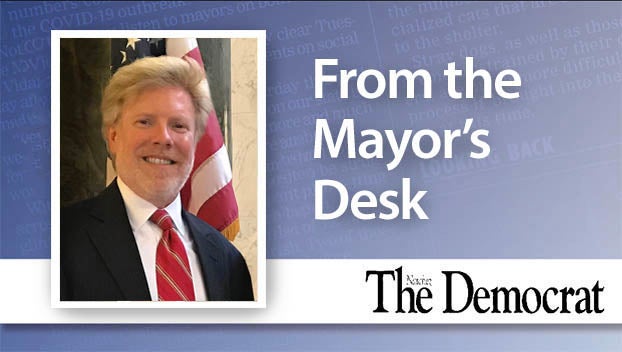Join us Saturday for Wilkinson Mound event
Published 12:10 am Thursday, June 27, 2019
The Mississippi River is the fourth largest watershed in the world, running over 2,300 miles from Minnesota to Louisiana.
When European exploration of the river began in 1541, it had already been serving as the interstate highway of North America for over 12,000 years.
The abundant resources of the Mississippi Valley meant that the landscape was able to support large prehistoric Native American populations who communicated, traded and traveled using the river’s fast-flowing waters.
Beginning about 5,500 years ago, residents of the Lower Mississippi Valley began marking the river’s importance in their lives by building earthen monuments in the floodplains and bluffs that surrounded it.
The earliest of these mounds were built at sites like Watson Brake and Poverty Point in northeastern Louisiana, while some of the latest and best understood were constructed right here in southwestern Mississippi. You’ve probably visited the Grand Village of the Natchez Indians, but this week, you have a chance to learn about many more. By the point of European contact, tens of thousands of mounds in various shapes and sizes had been constructed in the Mississippi Valley. Many of these have since been destroyed by looting, agriculture, and urban expansion, but many others still stand today as testament to the vitality and skill of their ancient builders.
Extraordinarily large and complex examples can be found within what is now the state of Mississippi. This includes both the Carson mound site, whose 88 mounds makes it the second largest mound group in the United States, and Emerald Mound, whose 35-foot-tall summit and 7.7-acre base makes it the second-largest ceremonial mound in the country. You can easily explore these two sites, and 31 others, by traveling the Mississippi Mound Trail, a driving trail that highlights 33 of the most accessible and well-studied sites in the state with roadside markers.
Since 2015, the two southernmost sites on the Mound Trail — Smith Creek and Lessley — have been the focus of extensive archaeological excavations conducted by a team from the University of Pennsylvania.
Located along Mississippi 24, west of Woodville, these two, mound sites chronicle over 1,700 years of Native American history. This summer, in addition to continuing excavations at Lessley, the archaeological team is opening an exhibit entitled “Exploring Familiar Landscapes: Native American Mounds in Wilkinson County” in the Wilkinson County Museum in Downtown Woodville. Designed in collaboration with the Woodville/Wilkinson County Main Street Association, the exhibit features artifacts from local sites and takes visitors on a chronological tour through the long history of moundbuilding in the Lower Mississippi Valley, emphasizing how the river has always and continues to affect the lives of the people who live along its banks. We hope you will join us for our exhibit opening event and lawn party 3 to 7 p.m. Saturday.
The event, spread between two museums in downtown Woodville, is free and open to the public and will provide family-friendly fun for all ages.
In addition to touring the exhibit in the Wilkinson County Museum, we will be running kids activity booths and an Artifact Roadshow at the African American Museum across the square from 3 to 5 p.m.
During this time, archaeologists will be on hand to answer any questions you may have and to identify artifacts you may wish to bring from your private collection (pottery pieces, projectile points, stone tools, etc.). From 5 to 7 p.m., we will celebrate the exhibit’s opening with a Lawn Party featuring music by Natchez-Native Y. Z. Ealey.
We hope to see you there, but if you can’t make it this weekend, the exhibit will remain open for viewing.
While there, be sure to pick up information about how to visit the many amazing archaeological sites located in Mississippi and Louisiana. Who needs a passport when some of the most spectacular prehistoric monumental architecture ever built can be found right here in your own backyard?
Megan Kassabaum, Ph.D, is the curator of the Wilkinson County Mound Exhibit. She is an Assistant Professor of Anthropology at the University of Pennsylvania and Weingarten Assistant Curator in the American Section of the Penn Museum in Philadelphia, Pennsylvania. She has worked as an archaeologist in the Natchez Bluffs for 13 years, having conducted excavations in Claiborne, Jefferson, Adams, and Wilkinson counties.




